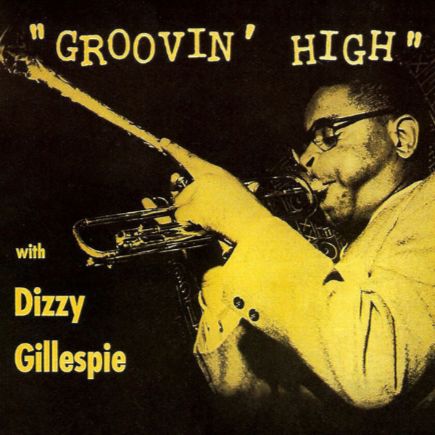All the Things You Are: complexité harmonique et succès inattendu
Créée en 1939 pour la comédie musicale Very Warm for May, All the Things You Are résulte de la collaboration entre Jerome Kern, pour la musique, et Oscar Hammerstein II, pour les paroles. La production, dirigée par Vincente Minnelli à Broadway, s’inscrit dans l’âge d’or de la comédie musicale américaine.
Dès sa sortie, la chanson connaît un succès fulgurant grâce à l’enregistrement de Tommy Dorsey, qui atteint la première place du hit-parade cette même année. Pourtant, Kern doutait du potentiel populaire de cette œuvre, qu’il jugeait trop complexe pour séduire le grand public.
Avec ses modulations inattendues et ses progressions harmoniques sophistiquées, All the Things You Are s’est imposée comme un standard de jazz majeur. De nombreux musiciens l’ont adoptée, fascinés par sa richesse structurelle. Charlie Parker, notamment, en a repris la grille harmonique dans sa composition Bird of Paradise, signe de la place centrale qu’occupe cette œuvre dans l’histoire du jazz.
Un standard réinventé par les maîtres du bebop
Le 28 février 1945, à New York, un sextet d’exception enregistre une version inoubliable de All the Things You Are. À la tête de ce groupe, Dizzy Gillespie à la trompette et Charlie Parker au saxophone alto, deux architectes du bebop, aux côtés de Clyde Hart (piano), Remo Palmieri (guitare), Slam Stewart (contrebasse) et Cozy Cole (batterie).
Cet enregistrement s’inscrit dans une période charnière de l’histoire du jazz. En ce début d’après-guerre, alors que le swing des big bands commence à s’essouffler, de jeunes musiciens cherchent de nouveaux langages musicaux, plus libres, plus complexes, plus personnels. Le bebop naît ainsi dans les clubs de Harlem comme le Minton’s Playhouse et le Monroe’s Uptown House, où se croisent Parker, Gillespie, Thelonious Monk ou Kenny Clarke.
Le bebop bouleverse les codes établis. Cette version de All the Things You Are en est un parfait exemple: la mélodie du standard y est rapidement esquissée avant de laisser place à une série de solos incisifs et inventifs. Parker, avec son phrasé fulgurant, et Gillespie, avec sa sonorité éclatante, redessinent le thème à travers une improvisation libre et savante, propulsée par la rythmique agile et souple de Hart, Palmieri, Stewart et Cole.
All the Things You Are: complejidad armónica y éxito inesperado
Creada en 1939 para el musical Very Warm for May, All the Things You Are nació de la colaboración entre Jerome Kern (música) y Oscar Hammerstein II (letra). La producción, dirigida por Vincente Minnelli en Broadway, se inscribe en la época dorada del teatro musical estadounidense.
Desde su estreno, la canción obtuvo un éxito fulgurante gracias a la grabación de Tommy Dorsey, que alcanzó el primer lugar en las listas ese mismo año. Sin embargo, Kern dudaba de su potencial comercial, considerando que su estructura era demasiado compleja para el gusto del gran público.
Con sus modulaciones inesperadas y sus sofisticadas progresiones armónicas, All the Things You Are se consolidó como uno de los estándares más influyentes del jazz. Numerosos músicos se sintieron atraídos por su riqueza estructural. Charlie Parker, por ejemplo, reutilizó su progresión armónica en Bird of Paradise, lo que confirma el lugar central que ocupa esta obra en la historia del jazz.
Un estándar reinventado por los maestros del bebop
El 28 de febrero de 1945, en Nueva York, un sexteto excepcional graba una versión inolvidable de All the Things You Are. Al frente del grupo están Dizzy Gillespie en la trompeta y Charlie Parker en el saxofón alto, dos arquitectos del bebop, junto a Clyde Hart (piano), Remo Palmieri (guitarra), Slam Stewart (contrabajo) y Cozy Cole (batería).
Esta grabación se sitúa en un momento crucial de la historia del jazz. A principios de la posguerra, cuando el swing de las big bands empieza a perder fuerza, una nueva generación de músicos explora lenguajes más libres, complejos y personales. El bebop nace así en clubes de Harlem como el Minton’s Playhouse y el Monroe’s Uptown House, donde confluyen Parker, Gillespie, Thelonious Monk y Kenny Clarke.
El bebop rompe con los códigos establecidos. Esta versión de All the Things You Are lo ilustra perfectamente: la melodía del estándar aparece esbozada brevemente antes de dar paso a una serie de solos incisivos e imaginativos. Parker, con su fraseo fulgurante, y Gillespie, con su sonoridad brillante, reinventan el tema a través de una improvisación libre y sofisticada, sostenida por el acompañamiento ágil y flexible de Hart, Palmieri, Stewart y Cole.
All the Things You Are: complessità armonica e successo inatteso
Creata nel 1939 per il musical Very Warm for May, All the Things You Are è frutto della collaborazione tra Jerome Kern per la musica e Oscar Hammerstein II per il testo. Lo spettacolo, diretto da Vincente Minnelli a Broadway, si colloca nel pieno dell’età dell’oro del musical americano.
Fin dal debutto, la canzone ottenne un grande successo grazie alla registrazione di Tommy Dorsey, che raggiunse il primo posto nelle classifiche di quell’anno. Eppure, Kern nutriva dubbi sul potenziale commerciale dell’opera, ritenendola troppo complessa per il grande pubblico.
Con le sue modulazioni sorprendenti e le progressioni armoniche raffinate, All the Things You Are si è imposta come uno degli standard più influenti del jazz. Numerosi musicisti ne sono rimasti affascinati per la sua ricchezza strutturale. Charlie Parker, ad esempio, ne riprese la sequenza armonica in Bird of Paradise, segno della centralità di questo brano nella storia del jazz.
Uno standard reinventato dai maestri del bebop
Il 28 febbraio 1945, a New York, un sestetto d’eccezione registra una versione indimenticabile di All the Things You Are. A guidare il gruppo ci sono Dizzy Gillespie alla tromba e Charlie Parker al sax alto, due veri architetti del bebop, affiancati da Clyde Hart (pianoforte), Remo Palmieri (chitarra), Slam Stewart (contrabbasso) e Cozy Cole (batteria).
Questa registrazione si colloca in un momento cruciale della storia del jazz. All’inizio del dopoguerra, mentre il swing delle big band inizia a perdere slancio, una nuova generazione di musicisti cerca linguaggi più liberi, complessi e personali. Il bebop nasce così nei club di Harlem, come il Minton’s Playhouse e il Monroe’s Uptown House, frequentati da Parker, Gillespie, Thelonious Monk e Kenny Clarke.
Il bebop rompe con i codici preesistenti. Questa versione di All the Things You Are ne è un esempio emblematico: la melodia del brano viene appena accennata, per lasciare subito spazio a una serie di assoli taglienti e fantasiosi. Parker, con il suo fraseggio fulmineo, e Gillespie, con un suono brillante, ridisegnano il tema attraverso un’improvvisazione libera e raffinata, sostenuta da un accompagnamento agile e flessibile firmato Hart, Palmieri, Stewart e Cole.
All the Things You Are: harmonic complexity and unexpected success
Written in 1939 for the musical Very Warm for May, All the Things You Are emerged from the collaboration between Jerome Kern (music) and Oscar Hammerstein II (lyrics). Directed by Vincente Minnelli, the Broadway production belongs to the golden age of American musical theater.
From its debut, the song experienced immediate success, particularly through Tommy Dorsey’s recording, which topped the charts that same year. Nevertheless, Kern had doubts about its popular potential, believing the piece too complex to appeal to a mainstream audience.
With its unexpected modulations and sophisticated harmonic progressions, All the Things You Are has become one of the most significant jazz standards. Many musicians were drawn to its structural richness. Charlie Parker, notably, based his composition Bird of Paradise on its chord changes — a testament to the central role this piece plays in jazz history.
A standard reinvented by the masters of bebop
On February 28, 1945, in New York, an exceptional sextet recorded an unforgettable version of All the Things You Are. Leading the group were Dizzy Gillespie on trumpet and Charlie Parker on alto saxophone—two key architects of bebop—joined by Clyde Hart (piano), Remo Palmieri (guitar), Slam Stewart (bass), and Cozy Cole (drums).
This recording belongs to a pivotal moment in jazz history. In the early postwar years, as big band swing began to lose momentum, a new generation of musicians was searching for more personal, complex, and liberated forms of expression. Bebop was born in Harlem clubs like Minton’s Playhouse and Monroe’s Uptown House, where Parker, Gillespie, Thelonious Monk, and Kenny Clarke regularly met and experimented.
Bebop disrupted established codes. This version of All the Things You Are is a perfect illustration: the melody is briefly sketched before giving way to a series of sharp, inventive solos. Parker, with his blazing phrasing, and Gillespie, with his radiant tone, reimagine the theme through free and sophisticated improvisation, propelled by the agile, responsive rhythm section of Hart, Palmieri, Stewart, and Cole.


